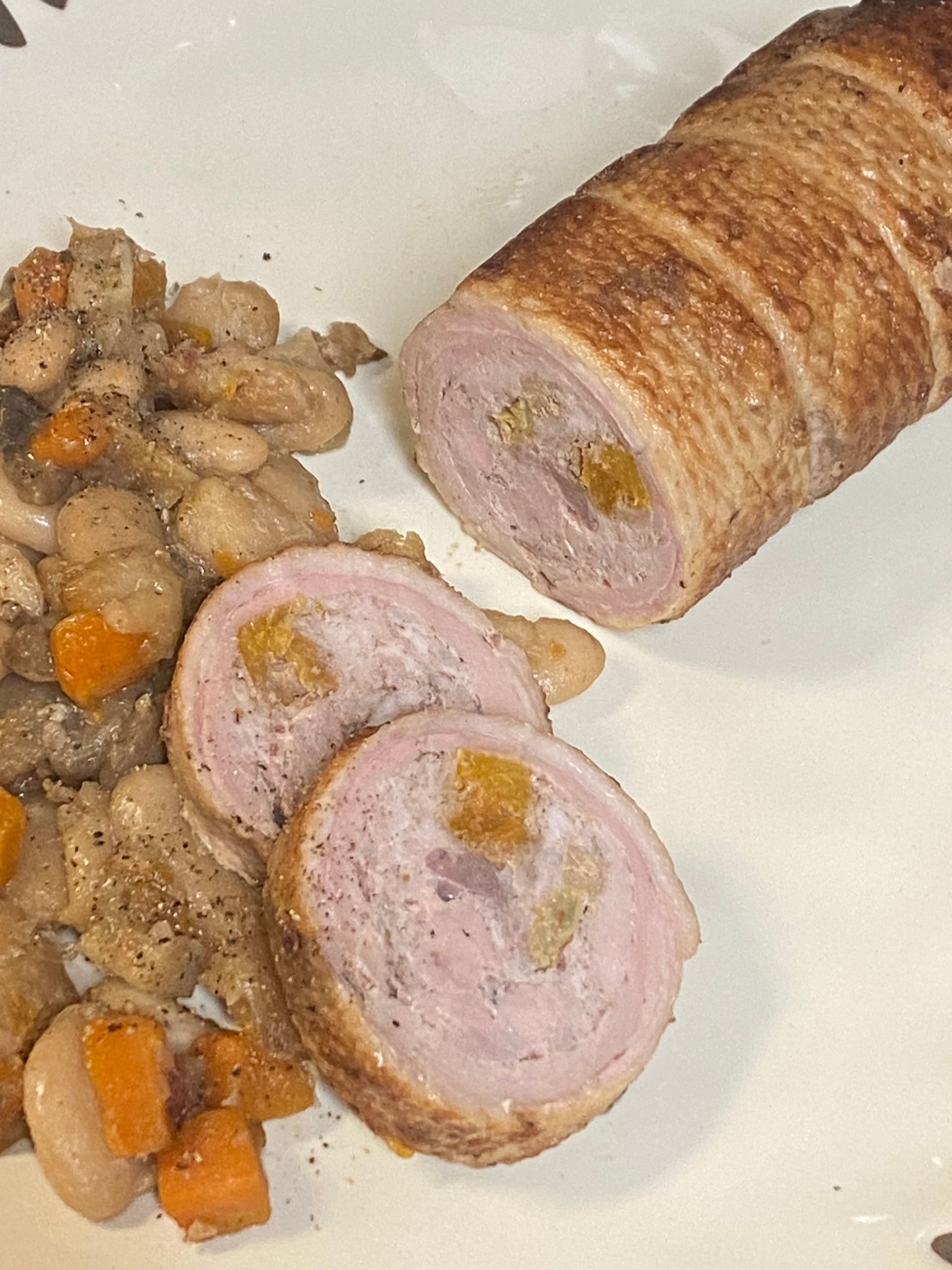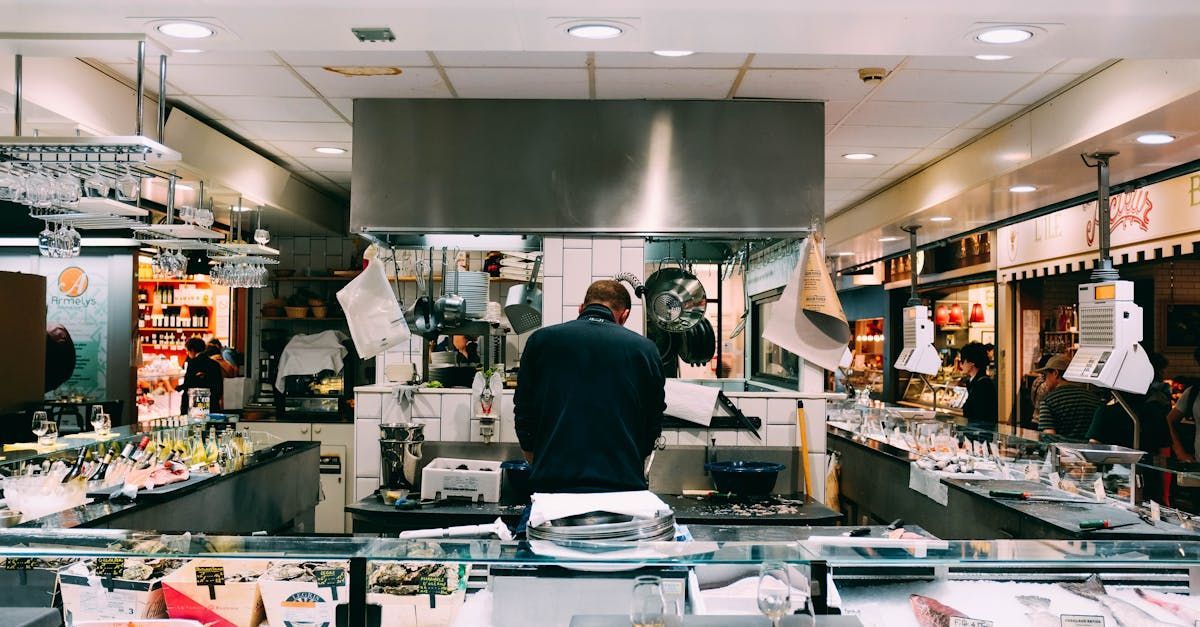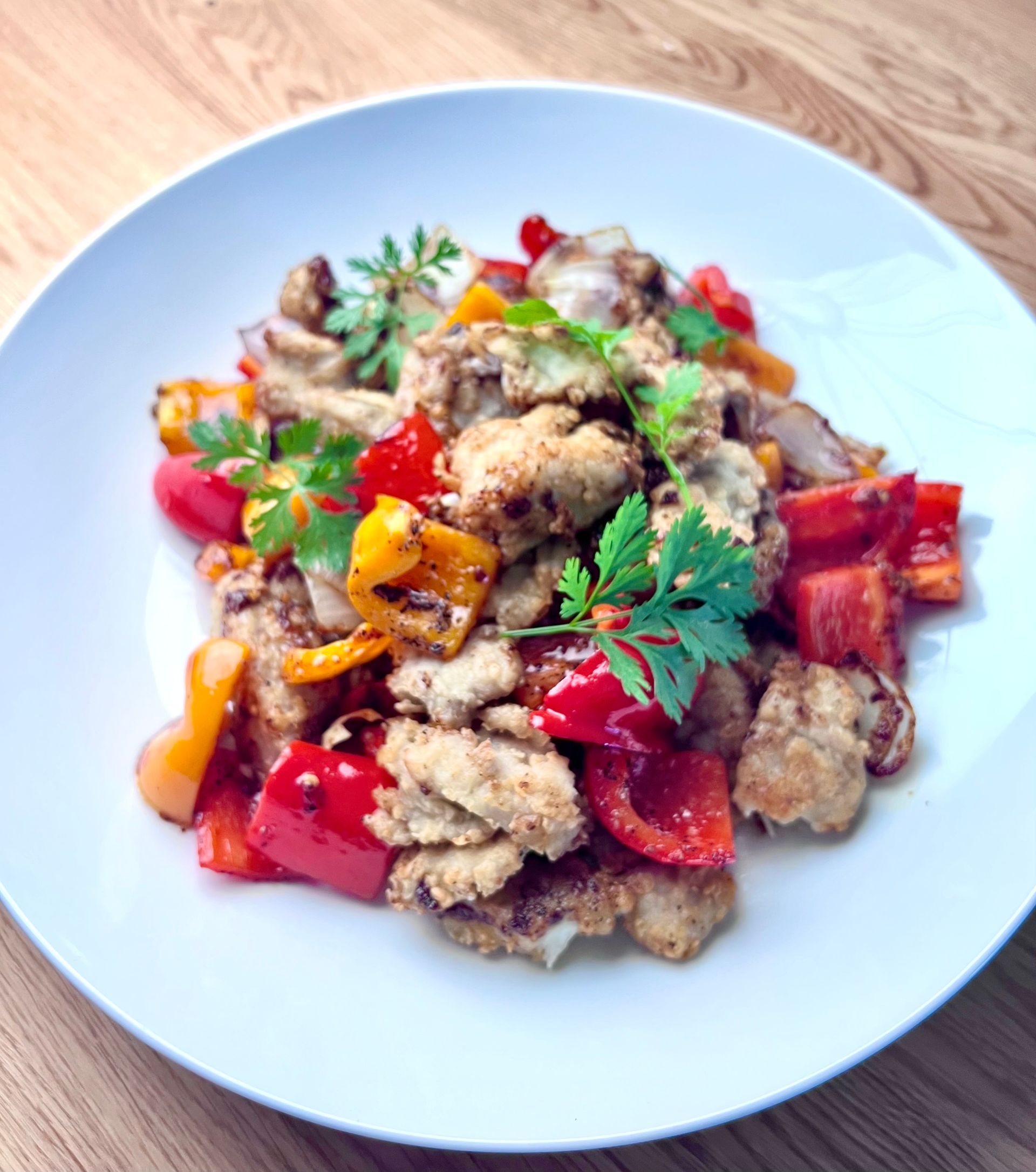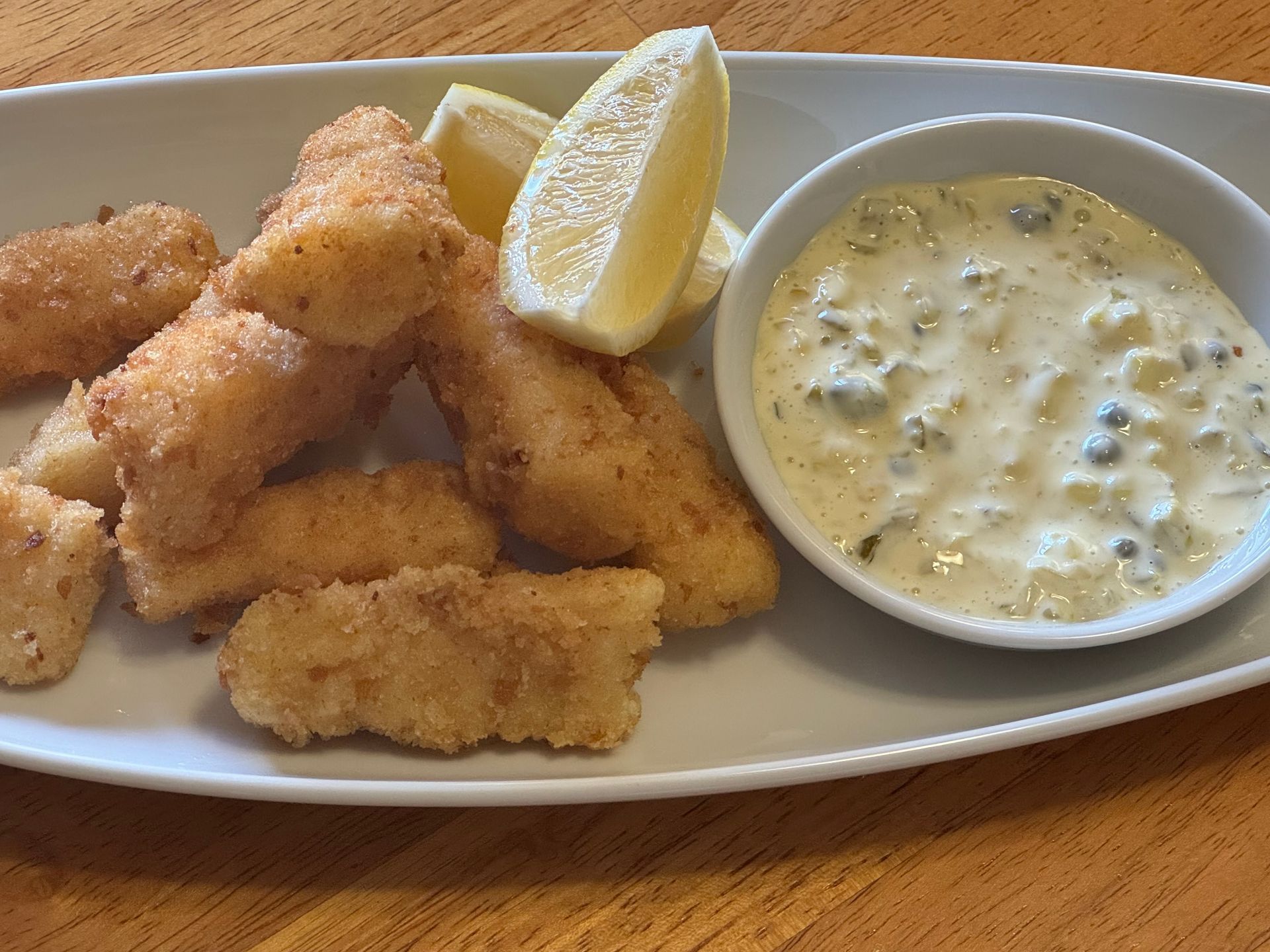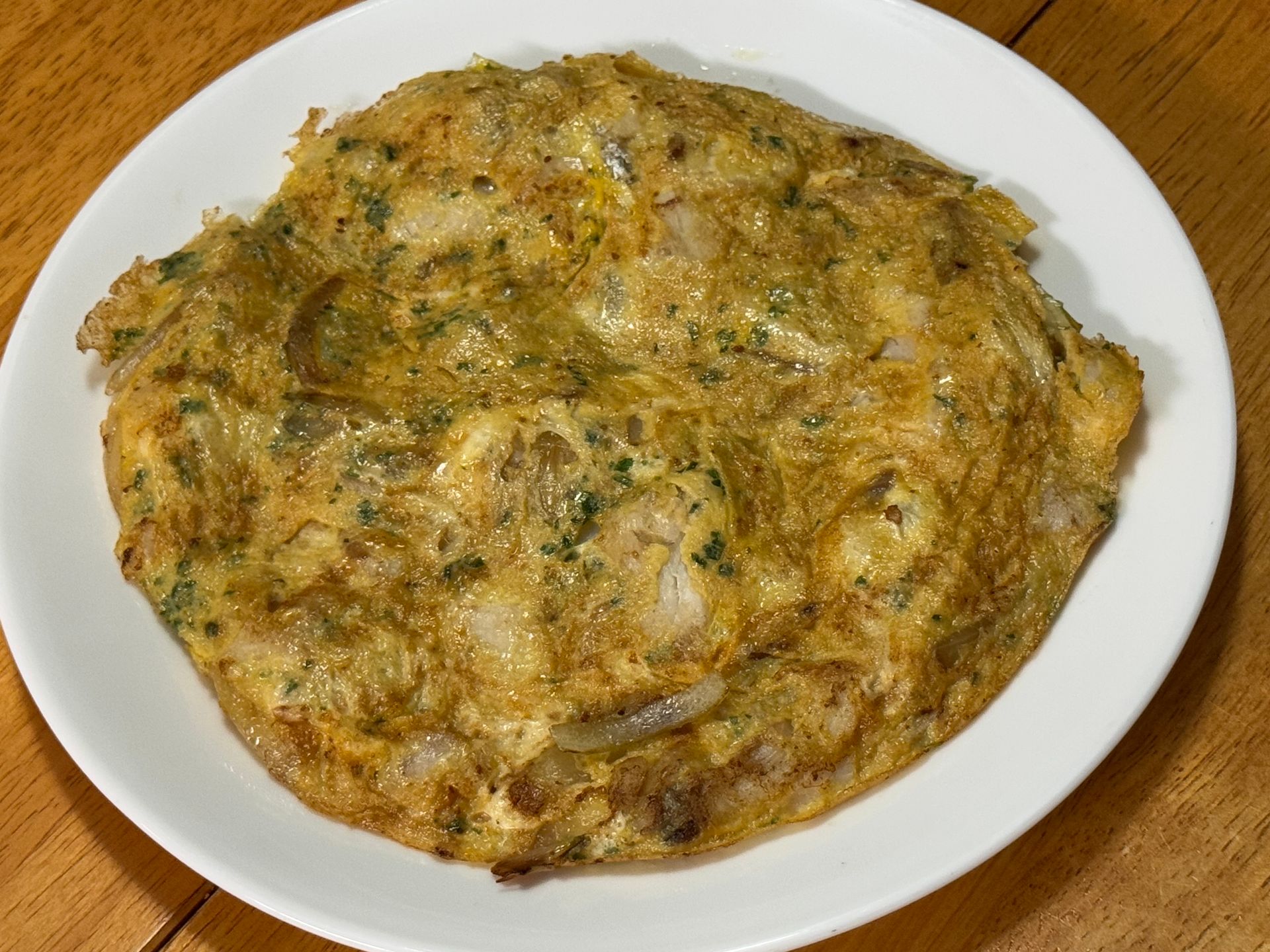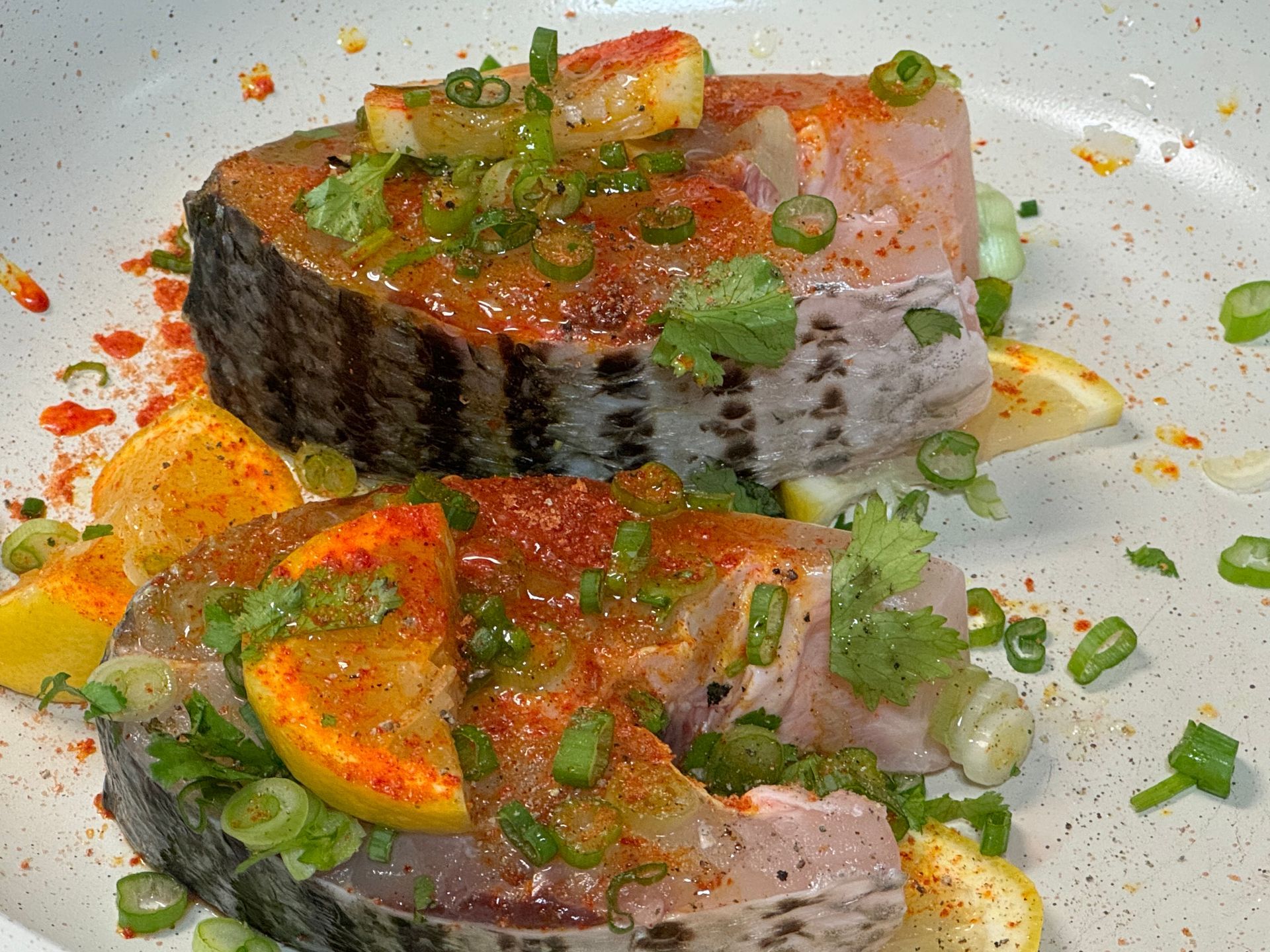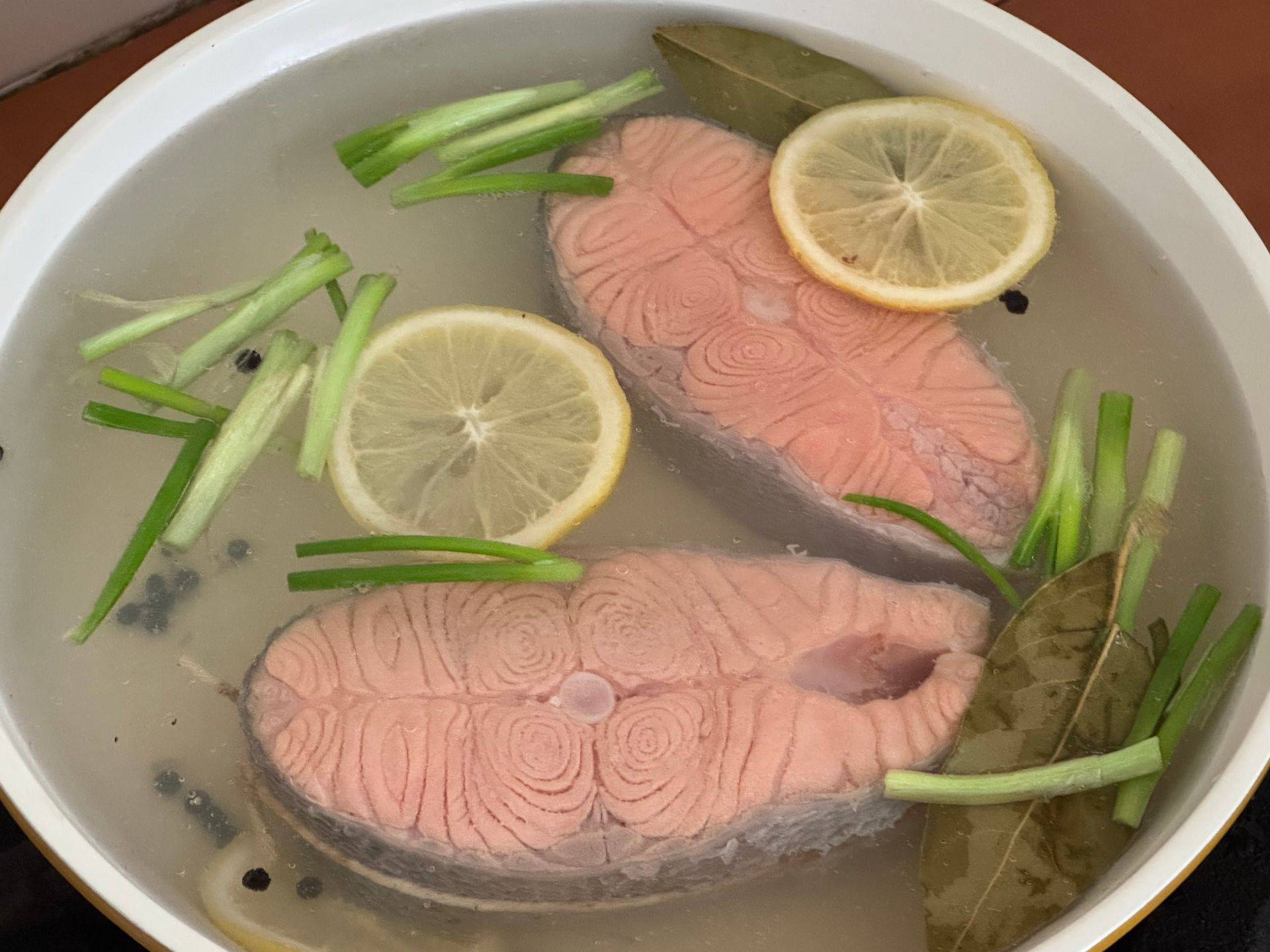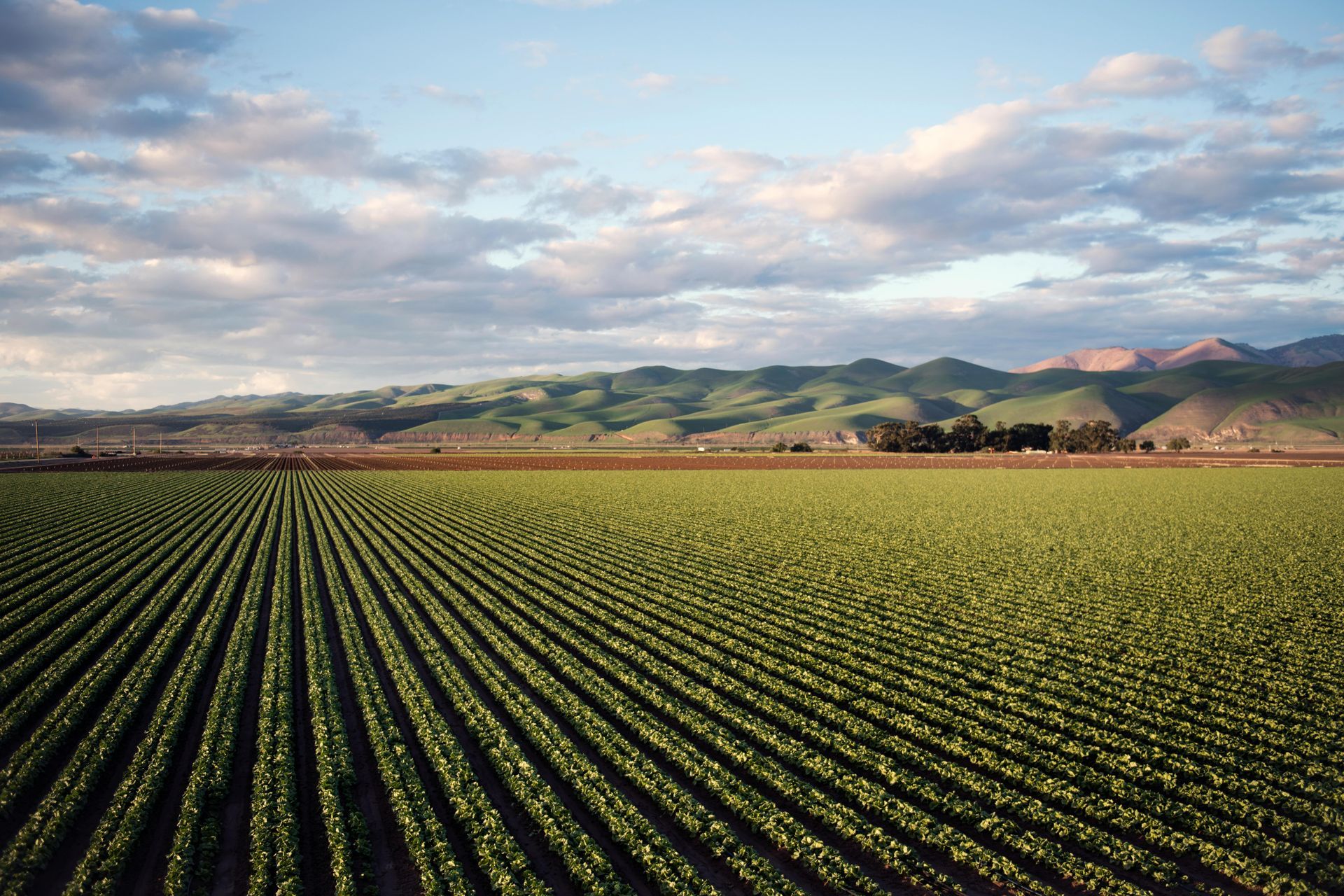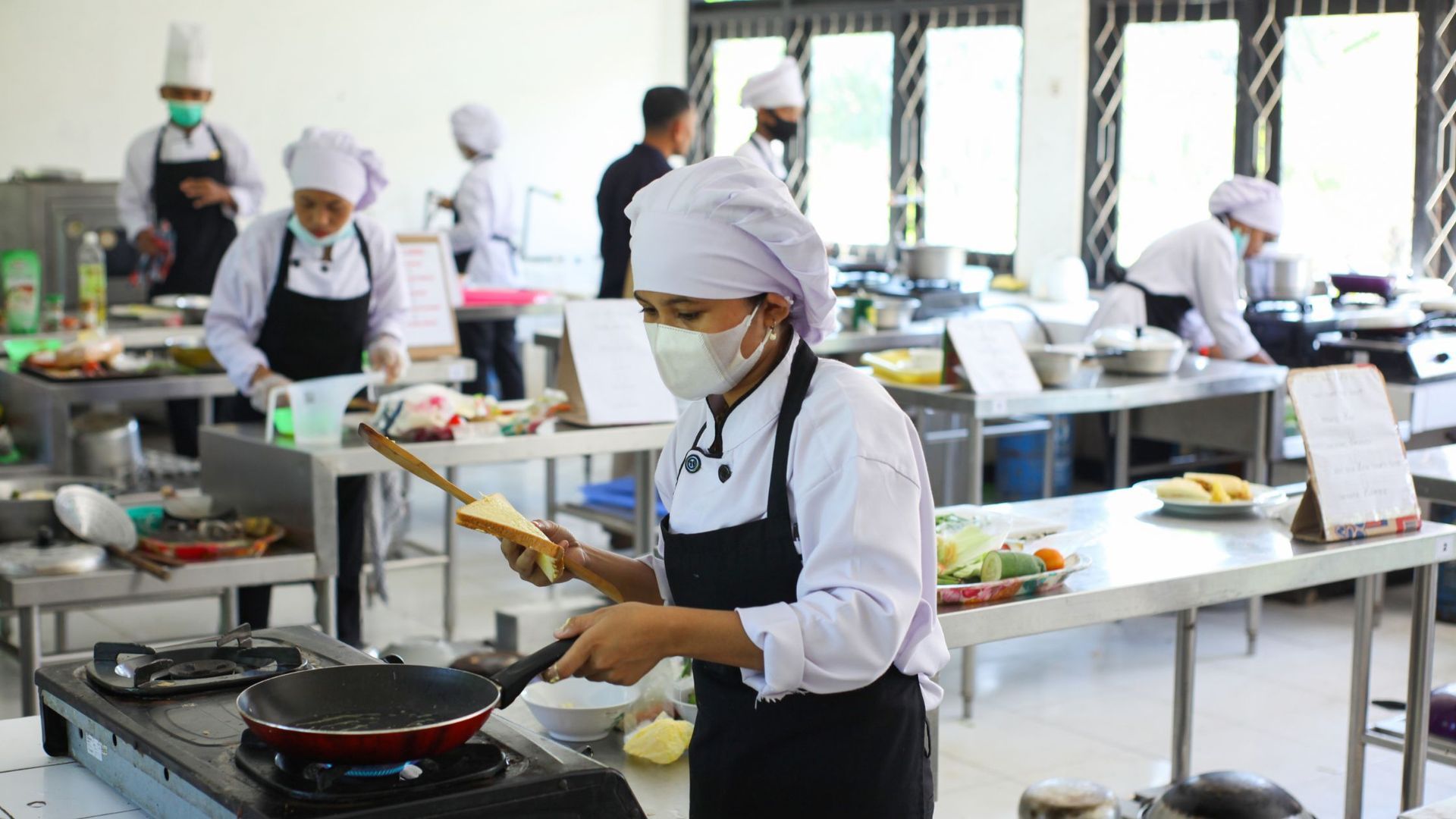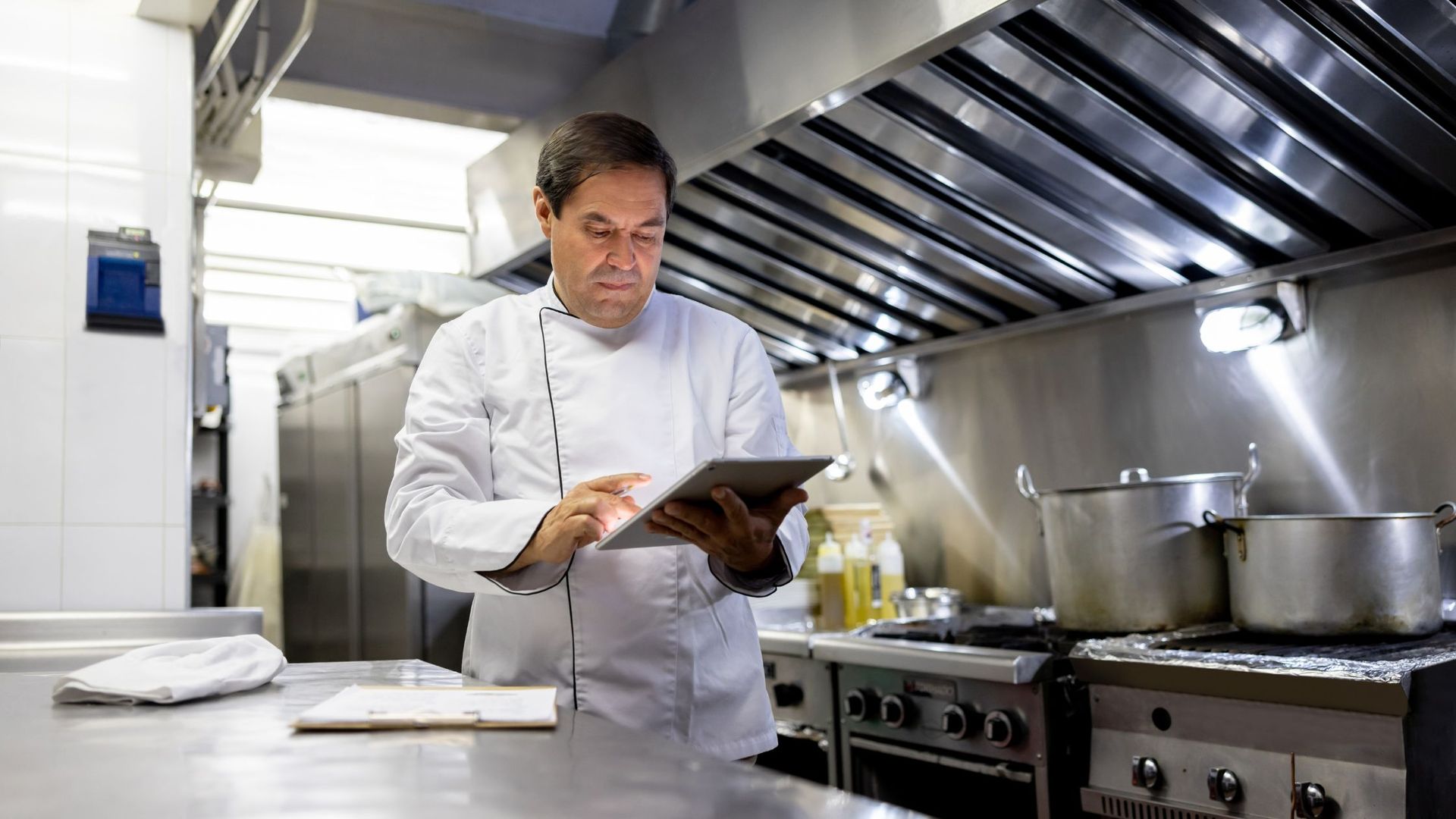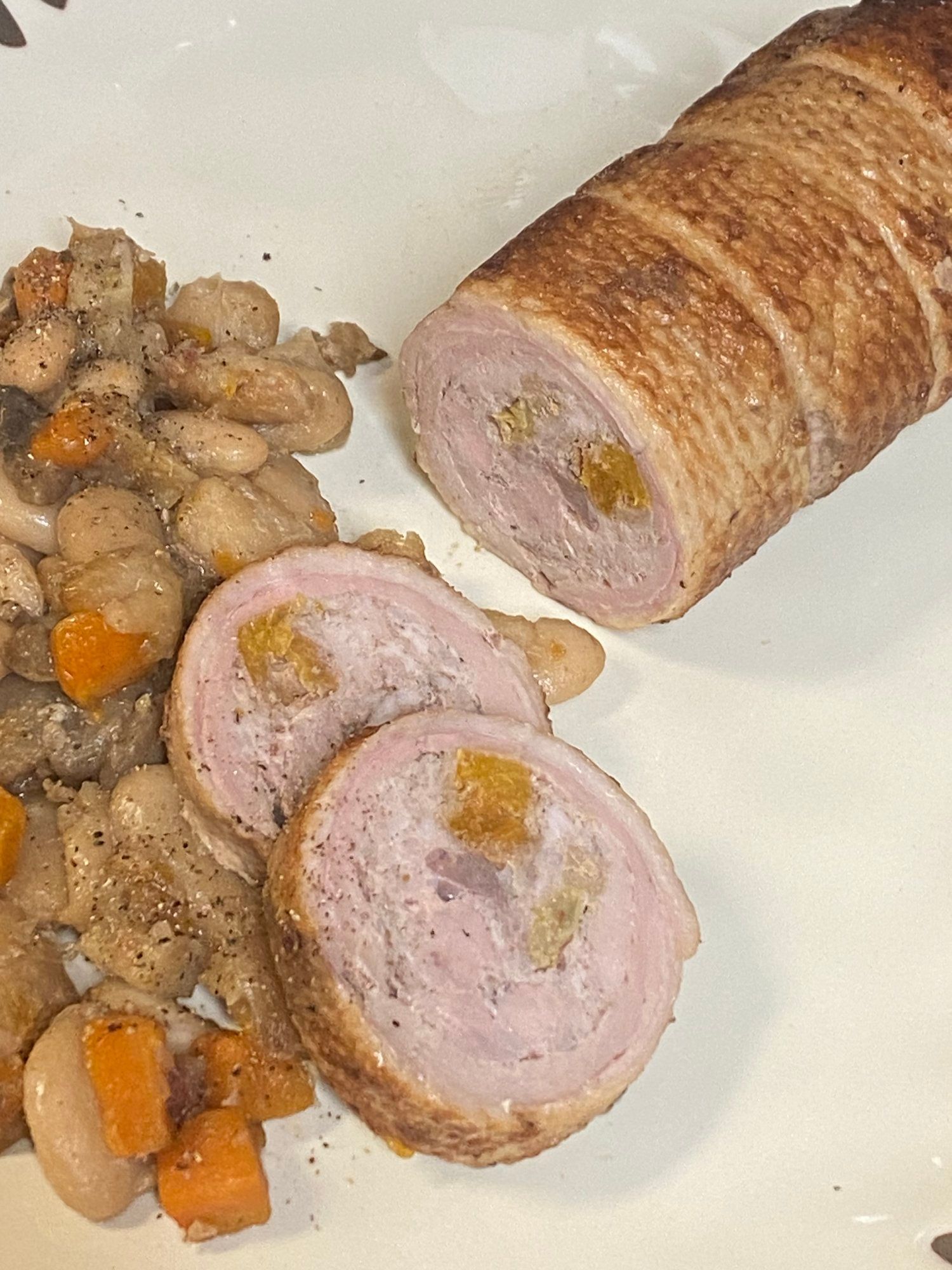
This is probably the most advanced recipe in my blog, it's one of my favorites because I made it during the Charcuterie portion of the CMC exam.
Ballotine of Duck
Preparing ballotines is a challenging garde manger technique. It requires a mastery in fabrication, forcemeat preparation, seasoning, garnishing and stock preparation (if poaching a galantine) as well as sanitation.
Cold, Cold, Cold!
This recipe is an advanced preparation; it's challenging & takes practice, & it is a lot of fun.
I actually prepared this during the charcuterie day during the CMC exam. I prepared two-one wrapped in cheesecloth and poached in duck stock & a second wrapped in plastic wrap. When I sliced the ballotine to serve to the evaluators the next day, I served the one in cheesecloth (much of the flavor had infused into the poaching liquid)-I earned an 80; when the evaluators left I sliced & tasted a piece wrapped in plastic & it was exceptional. I had been too intimidated to offer them a second taste from the better ballotine!
The exam is so incredibly physiological...
Prep Time: 3 hours
Cooking Time: 5 hours
Ingredients
Yield: 10 portions
1 ea Whole duck (3 lb Long Island w gizzards)
8 oz Duck leg & thigh meat, cleaned & diced from the whole duck
2 oz Pork fatback, cubed
2 oz Pork butt, cubed
1/8 tsp. TCM, (optional)
2 tsp. Salt
2 Tbsp Herbs, chopped (parsely, chives, tarragon)
1 tsp Poultry seasoning/Pate spice
1 Tbsp Salt
1 tsp Black pepper
1/2 oz Butter
3 Tbsp Onions, minced
1 clove Garlic, minced
3 oz Sherry wine
1 each Egg
2 oz Heavy cream
1 tsp Duck glace (made by simmering stock)
Garnish:
3 oz Smoked ham/smoked tongue, small dice
3 oz Truffle peelings
3 oz CA Bakers Fruit Medley/ dried apricots, quartered & plumped in white wine or brandy
3 oz Pistachio Nuts, blanched & peeled; chopped
Duck liver, heart and stomach may be poached, cooled and diced-added to garnish
How to prepare the duck ballotine
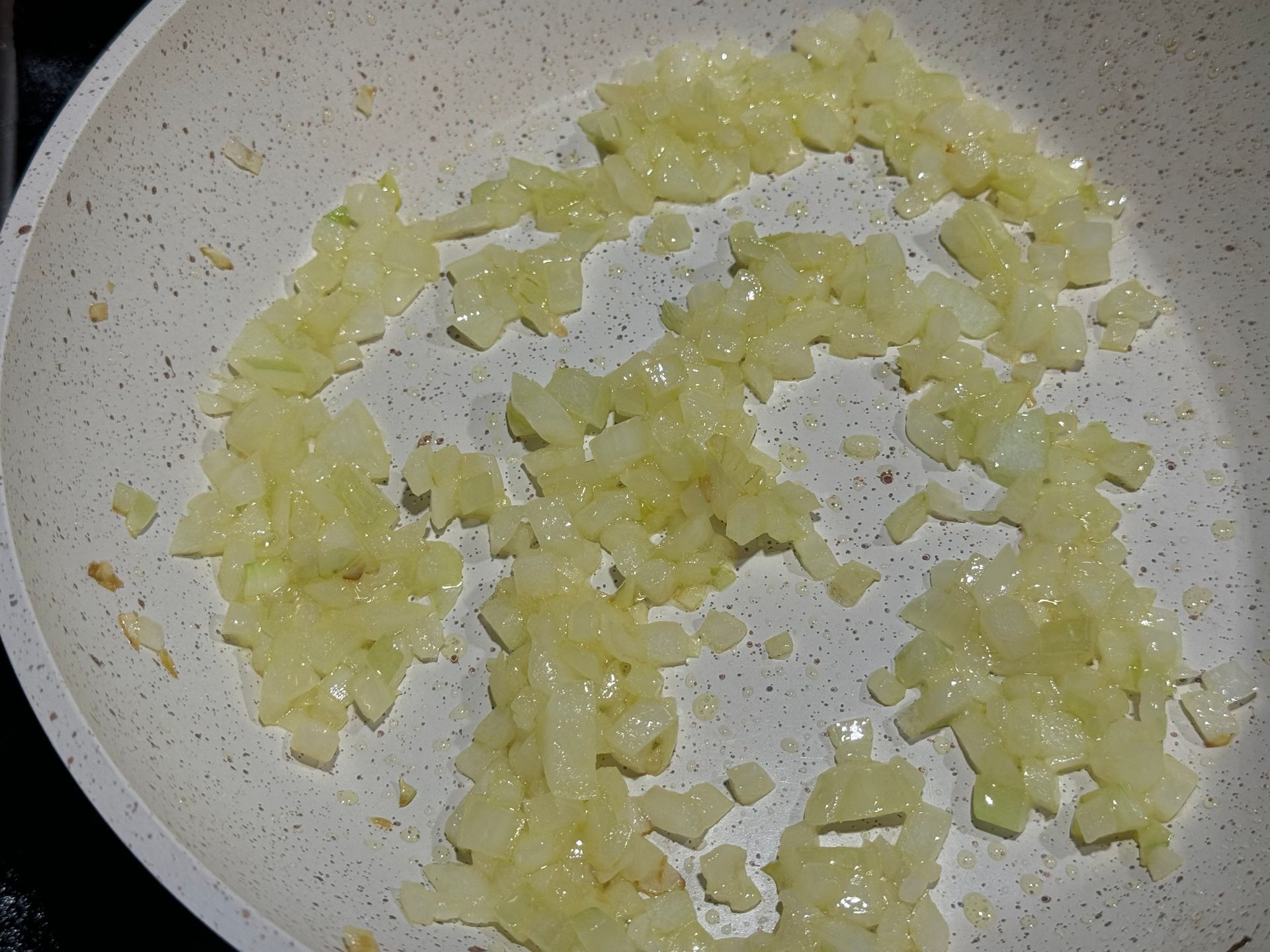
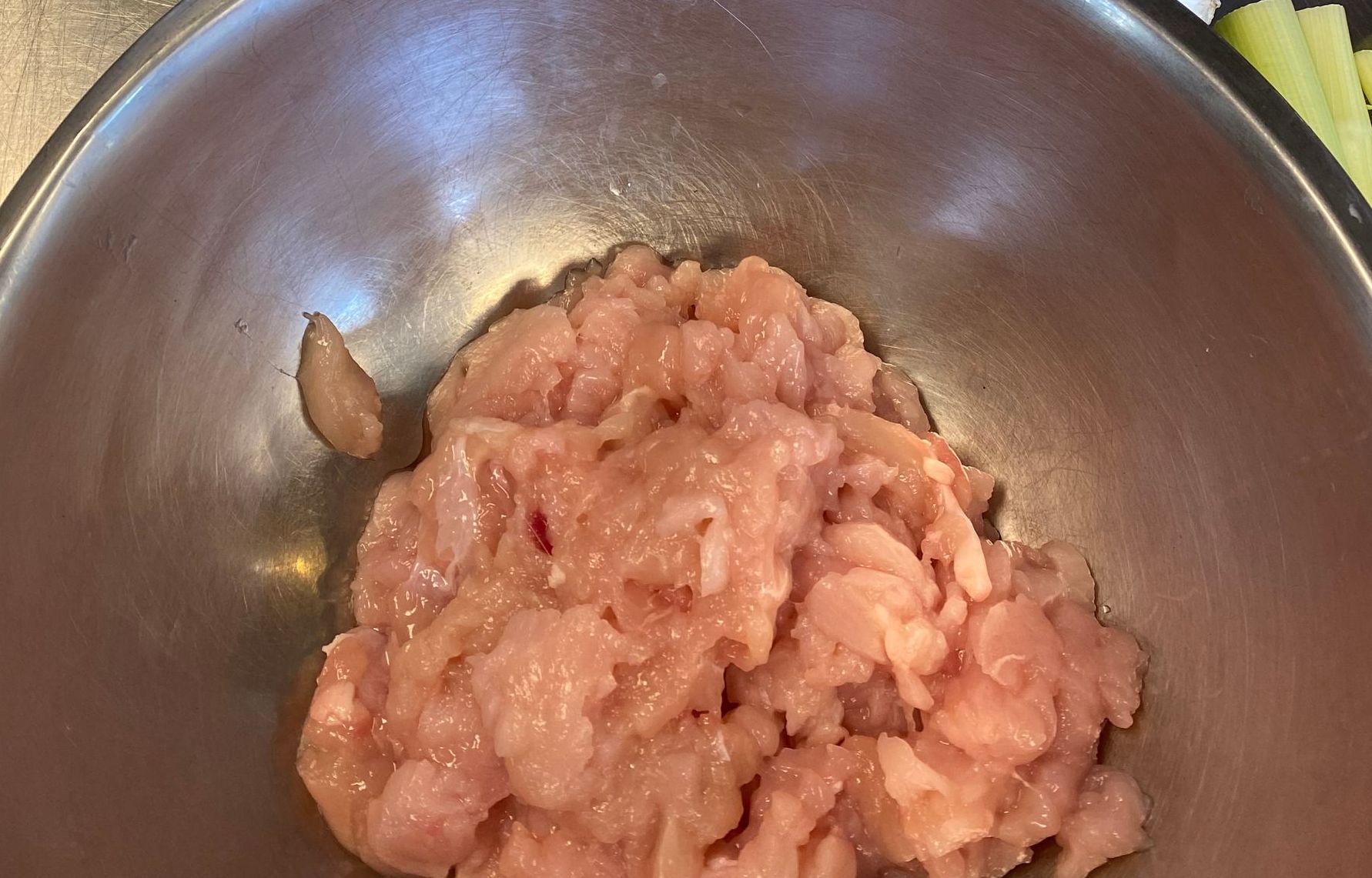
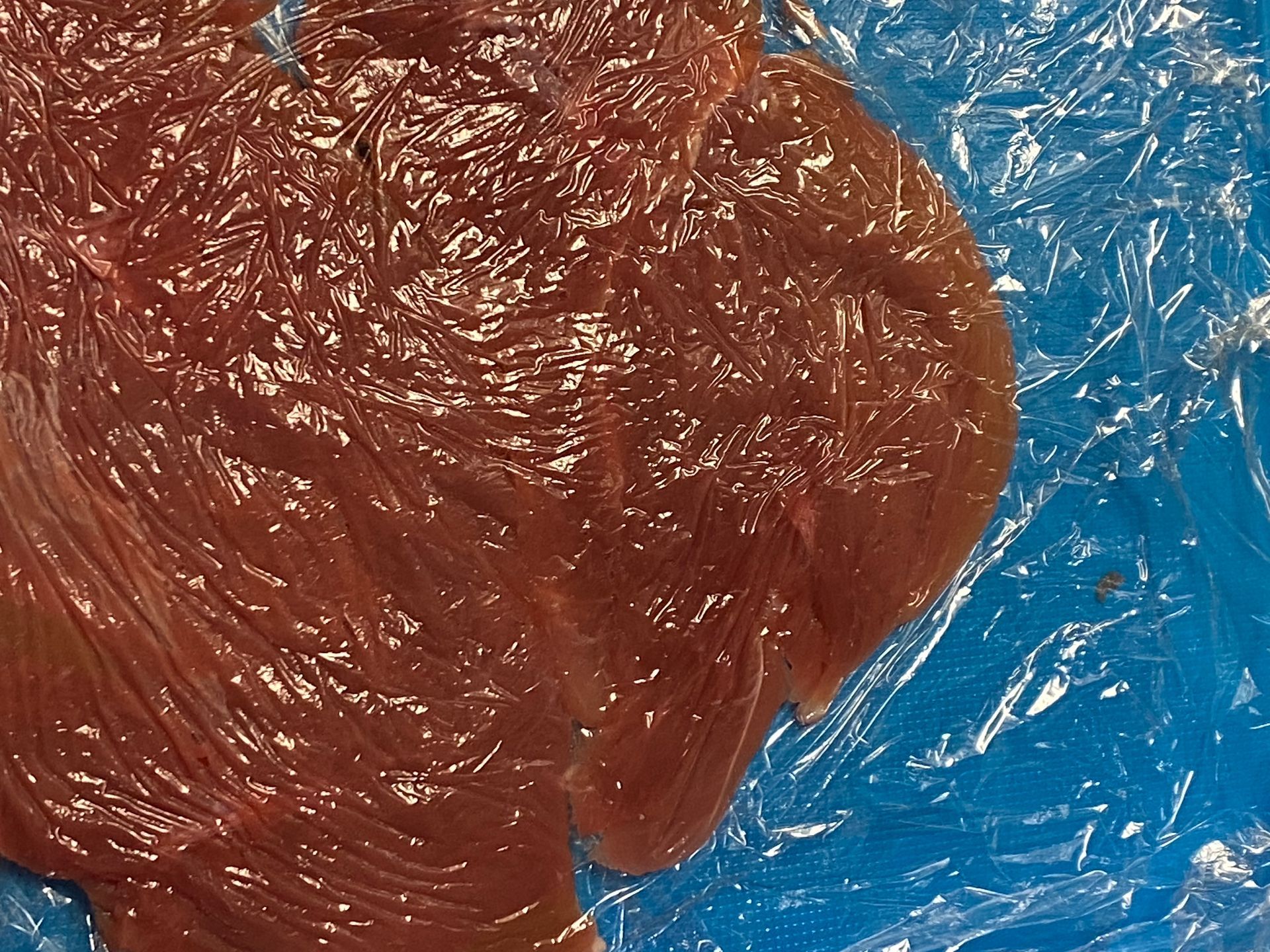
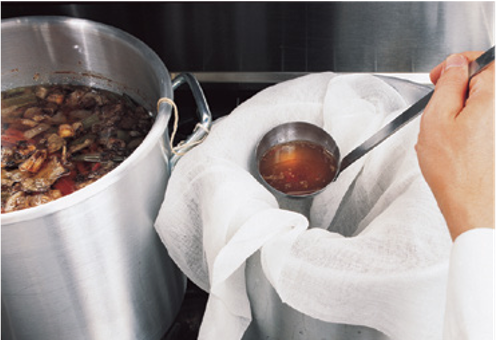
Step 1 Fabricating the duck
Slice down the back of the duck with a boning knife, peel the skin from the duck on both sides until you reach the wings and legs. Don't tear/cut the skin.
Cut off the tip of the wing and leg-reserve for stock. Pull the skin over the wings and over the thigh/leg carefully to avoid tearing the skin. Continue over the breast until the entire skin is removed. Place onto a tray over plastic wrap, place into the freezer to firm the fat on the skin.
Sweat onion and garlic in butter, deglaze with sherry and cool.
Carefully cut off the breasts, take off the tenders, leg and thigh meat; place in a bowl with fat back, pork butt, seasonings-keep cold to grind for forcemeat.
Flatten the breast to about 1/8th inch thick (as even as possible). Season and marinate for several hours in the refrigerator.
Roast the duck bones, then place the browned bones into 2 qts chicken stock with roasted mirepoix and sachet d' eptices; simmer for 3 hours, being careful to skim fat and impurities.
Strain, reduce to a glace (about 1/2 cup) and cool.
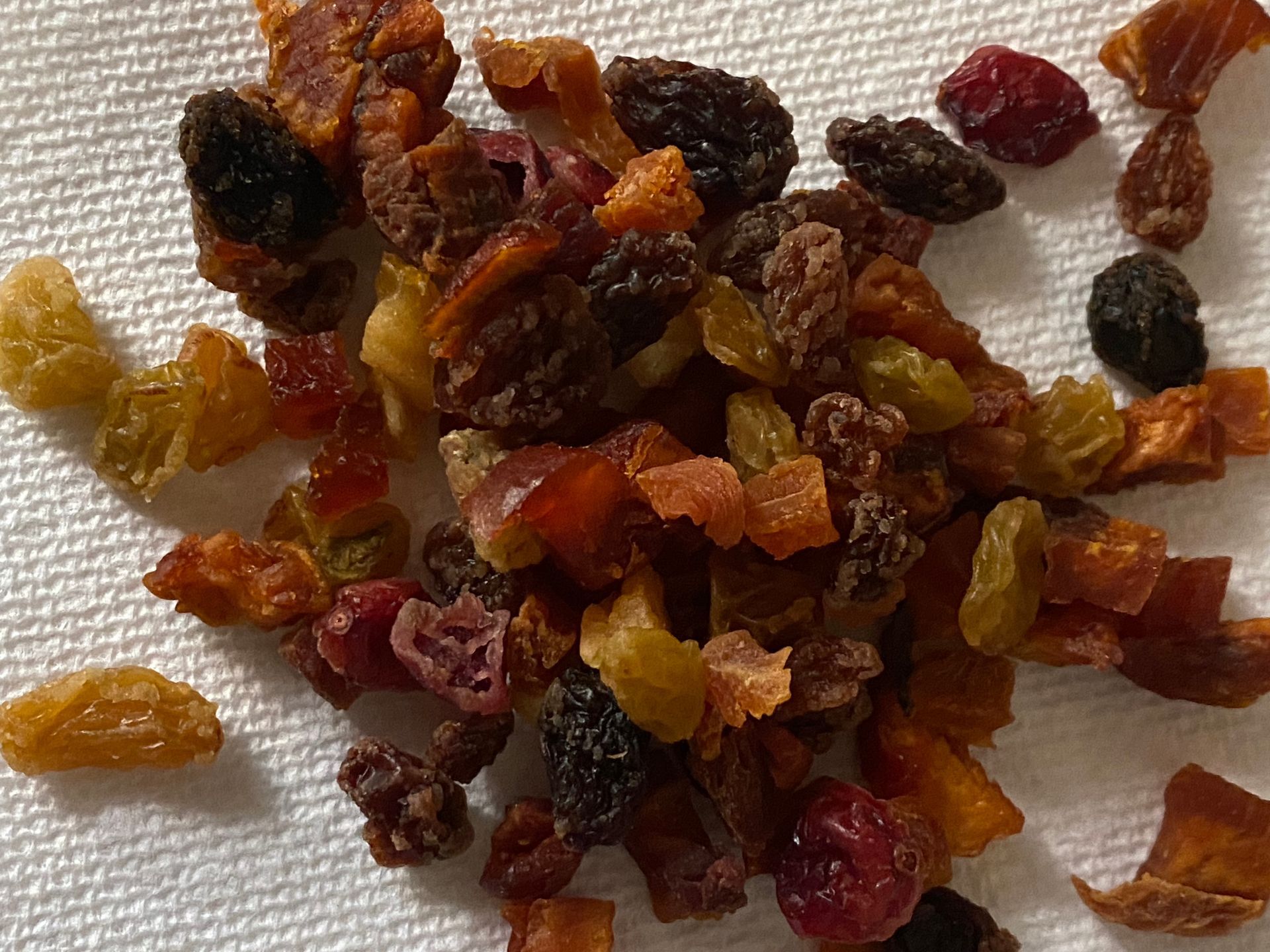
Step 2 Preparing the forcemeat
Add cooled sweated shallots and garlic to the diced meats. Grind the marinated meat into a cold bowl, add the egg and cream over ice and incorporate completely. I like this dried, fruit blend called ‘CA Bakers Fruit Medley'. I macerate the fruit in brandy for about 2 hours before adding to the duck and pork forcemeat.Mix well and fold in garnish. Poach a sample and adjust seasoning and consistency.
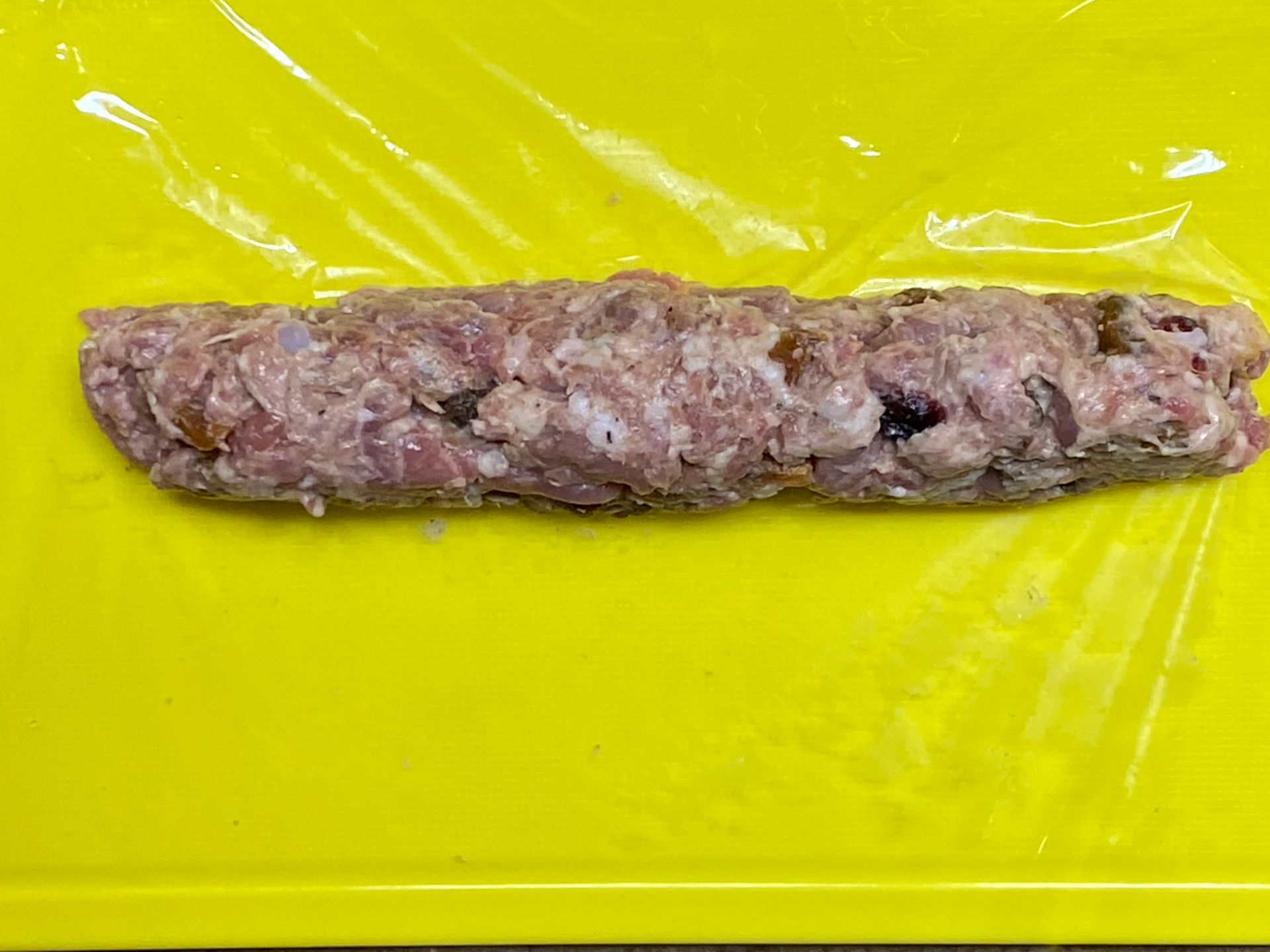
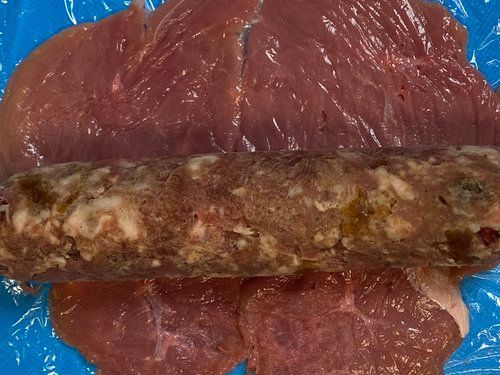
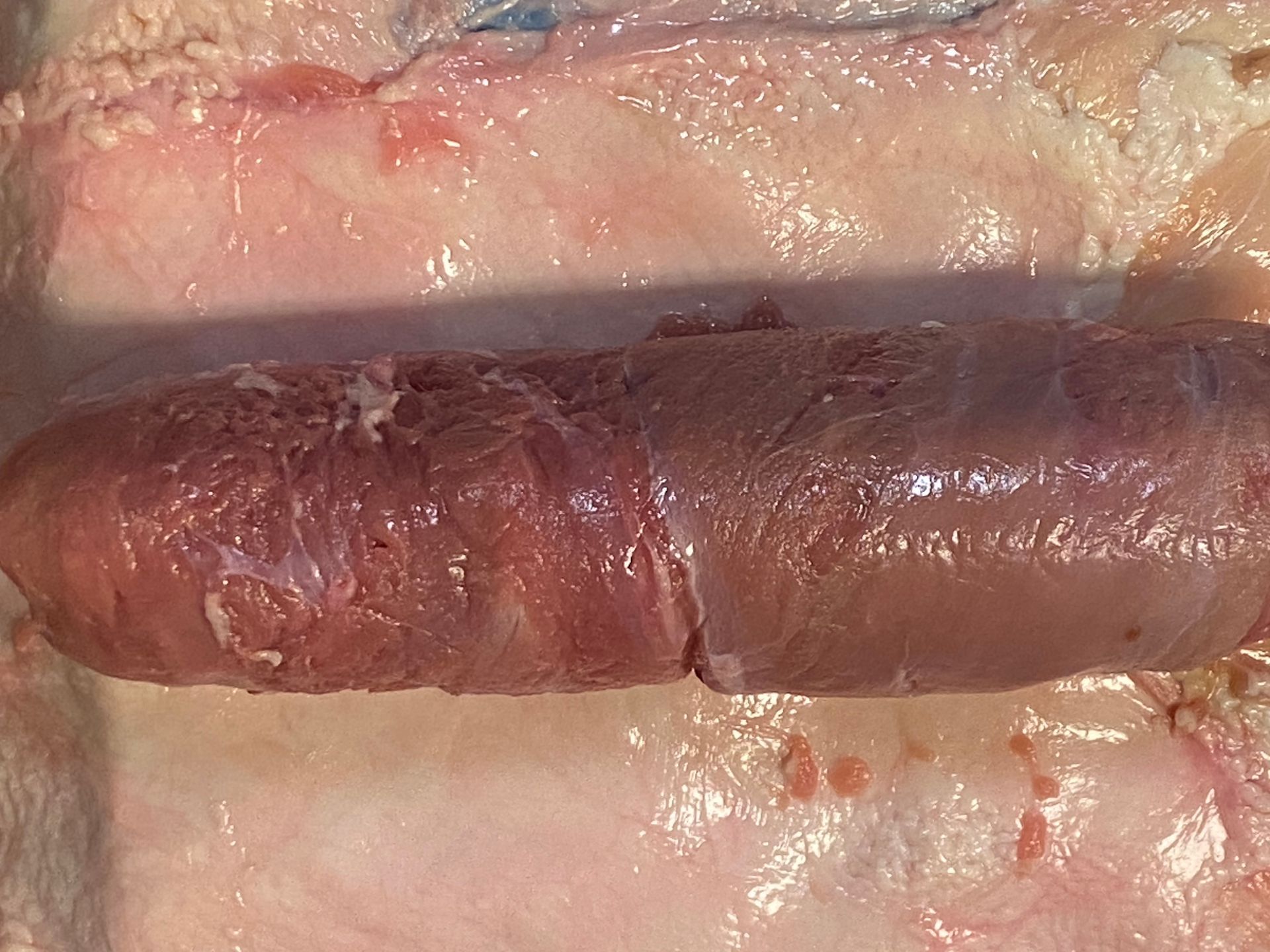

Step 3 Assembling the ballotine
To assemble, fill a disposable pastry bag with forcemeat and pipe out a large log (around 2 inches in diameter). Wrap and freeze for about an hour so it’s easier to assemble. During that time slice off as much of the fat from the slightly frozen skin as possible.
Place the skin on a sheet of plastic wrap.
Lay the marinated, flattened duck breast onto plastic wrap and then unwrap the forcemeat log piped earlier and lay that in the center of the duck breast. Wrap the duck breast around the forcemeat, overlap so there is at least an inch overlap. Unwrap and place the duck breast wrapped forcemeat onto the skin, wrap the skin around the breast.
The duck skin shrinks!
Wrap the final product in cheesecloth (no plastic) and poach in the duck stock at 150 °F until cooked. I cook duck ballotine to 140 °F since I will cook it again to get the beautiful browned skin. Cool the ballotine, unwrap and wipe off all of the gelatine and moisture, then tie and brown on a rack in the oven at 350 °F until golden brown.
Slice to serve.
